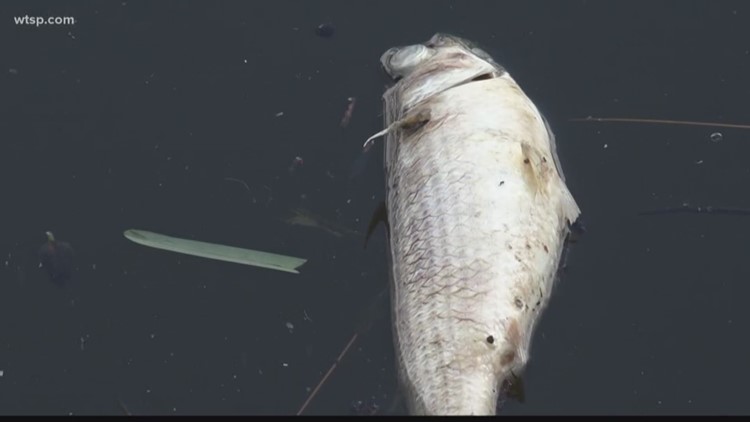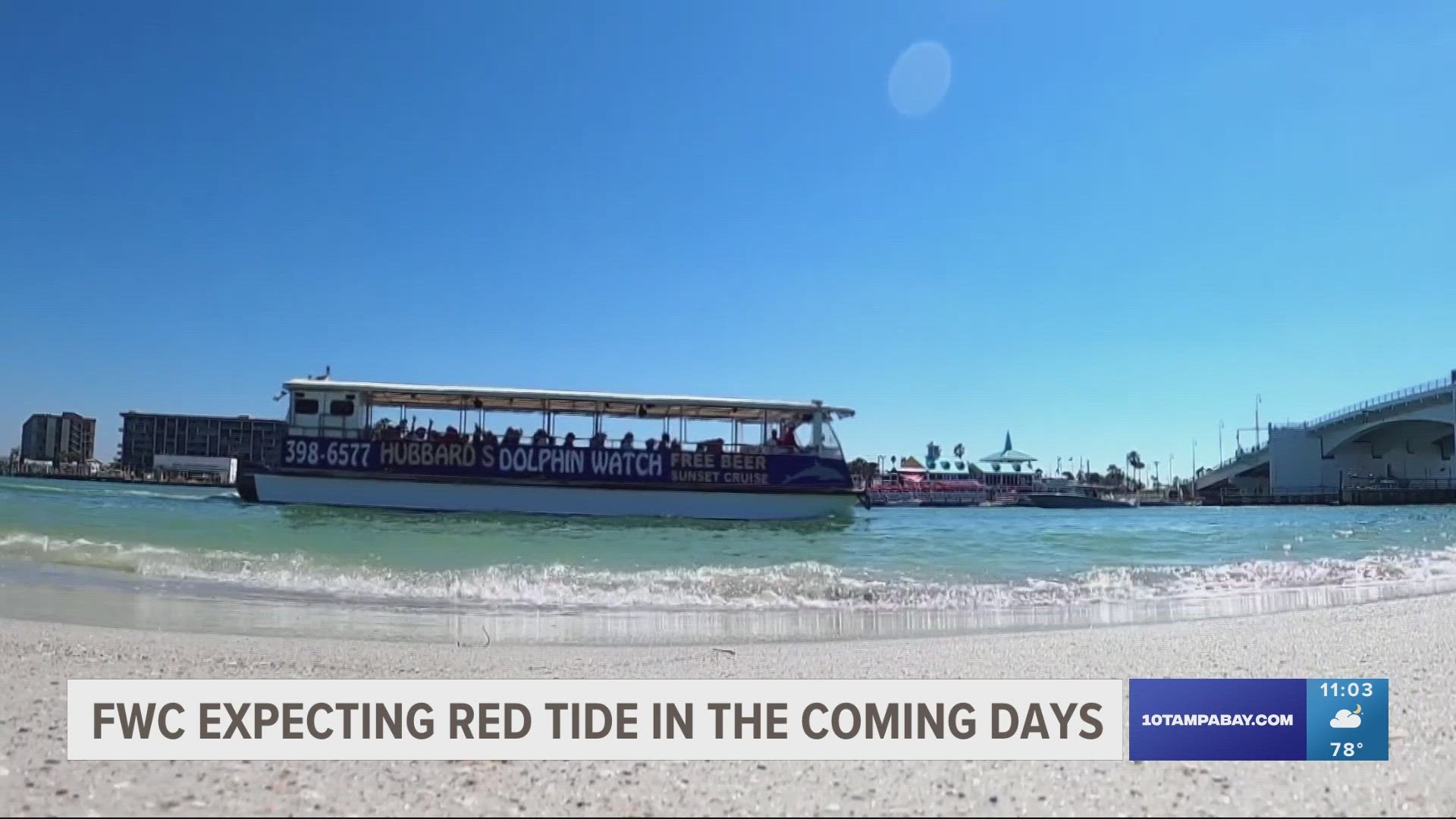TAMPA, Fla. — Red tide continues to linger around some of Florida’s Gulf Coast counties.
The Florida Fish and Wildlife Commission said Karenia brevis, the red tide organism, was present in Sarasota, Charlotte, Lee, and Collier counties in bloom concentrations.
K. brevis was observed in background to very low concentrations in Pinellas and Manatee counties.
FWC reported fish kills in Sarasota, Charlotte, Lee, and Collier counties. Sarasota, Lee and Collier counties also reported respiratory irritation.
Another report will come out on Friday, Nov. 22. In the meantime, people can check out the daily sampling map here.
What is red tide?
Red tide made headlines last year as it caused problems for beachgoers, marine life and businesses around Florida.
Red tide is a “harmful algal bloom,” according to the National Oceanic and Atmospheric Administration.
The blooms happen when the colonies of algae start to grow out of control and produce powerful toxins that harm and even kill marine life, NOAA reports. People also can be affected by red tides. They can experience eye irritation, respiratory issues, asthma and in rare occurrences, death.
If your skin is prone to irritation, you should definitely avoid red tide water. And, if you do get irritated after swimming in red tide, get out right away and thoroughly rinse yourself with fresh water. People with respiratory issues like asthma or bronchitis should definitely avoid red tide areas -- especially when winds are blowing ashore, according to Florida health officials. If you begin to experience respiratory problems, leave the beach right away and find air conditioning. If your condition worsens, see a doctor.
Pets can be affected by red tide, too. If you live near the beach, think about taking your animals inside to prevent respiratory irritation. And, if you're at the beach, don't allow your pets to play with dead fish or foam.
In Florida, the most well-known red-tide-causing organism is known as Karenia brevis, which blooms in the Gulf of Mexico almost every year -- usually in late spring or early fall, according to the FWC. The FWC says Florida's red tides originate in nutrient-poor water that's 11 to 46 miles offshore. Red tides can last anywhere from a few weeks to longer than a year, depending on wind, water, currents, sunlight and other factors.
Researchers continue to study red tide and possible ways to control it, but so far there’s no magic solution. The harmful effects of red tide are caused by the toxins released when the organism dies.



